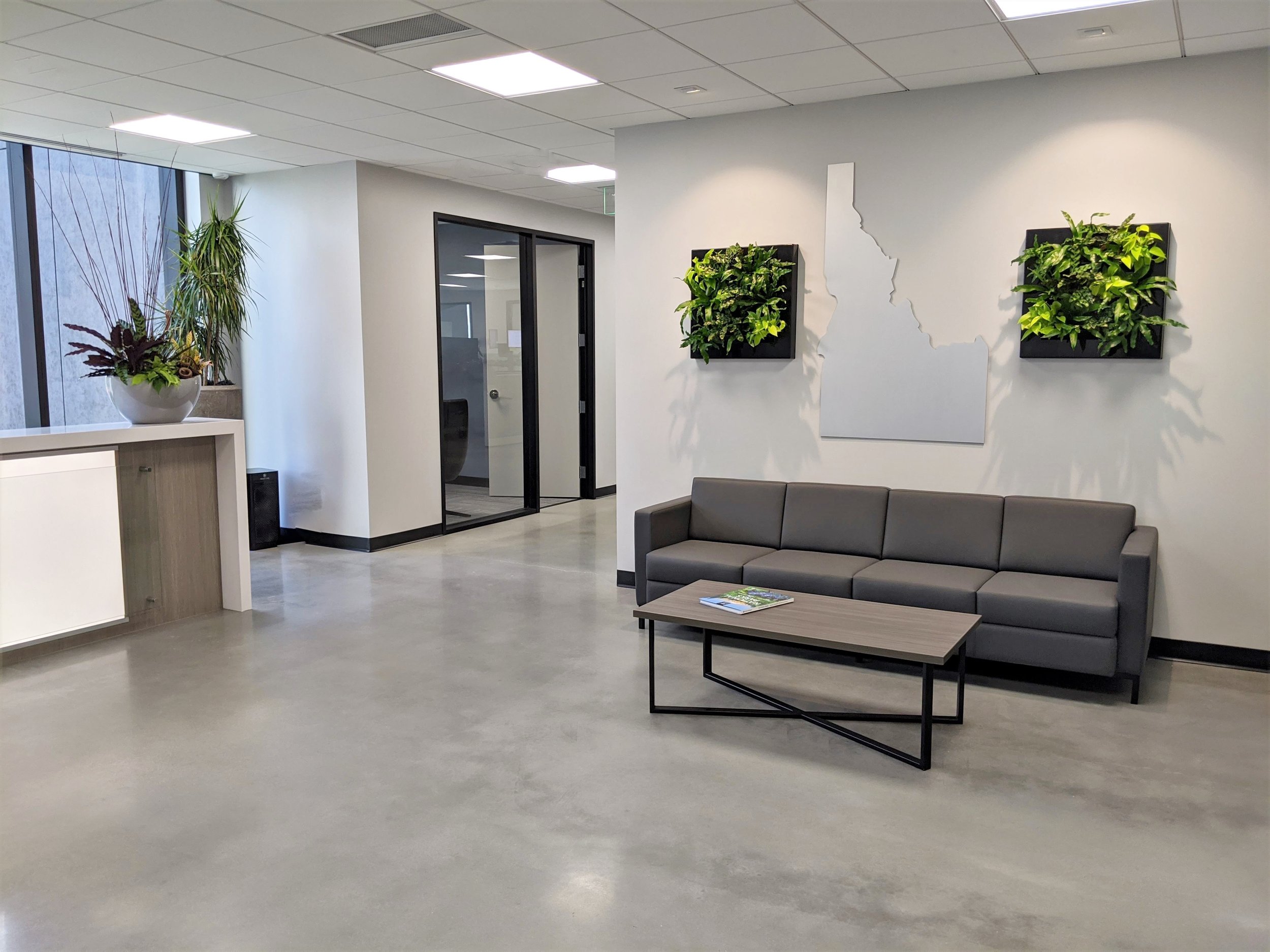Biophilia: The Future of Workspace
The Future of Workspace
in the Post-Pandemic Era
Original article written by Estudio Guto Requena June 6, 2021
The Coronavirus pandemic demanded new needs and significant changes in our lives: in relationships, at work, in consumption habits, in increasing inequality. Indeed, the theme of workspaces came up in a historical moment when people saw their own freedoms limited for the first time in the postmodern era.
Most people were forced to work from home, and since the beginning of quarantine, reflection on the future of workspaces has become inevitable. Some interesting data show that the Coronavirus only boosted a practice that had been consolidating for years in some countries. According to the Global Workplace Analytics e FlexJobs, between 2005 and 2015, the number of professionals in the United States who do at least 50% of their work from home or elsewhere outside their offices grew by 115%, and today that number reaches 4.7 million, 3.4% of the strength of the job.
Today, the office exists to incorporate the company's values and culture, experience the collective, boost and empower the community. The human being is by nature a social being and needs meeting spaces.
Thinking about the human experience in the workspaces will be a fundamental change in the next decades. The key subjects will be Artificial Intelligence, Automation, Demography, and Sustainability. Our buildings should be smart and healthy responding to the requirements of their employees for welfare.
Biophilia to avoid the “sick building syndrome”
According to The New York Times publication, if the September 11, 2001 attacks led to the creation of tighter control systems and the flooding of Hurricane Sandy in 2012 caused the rise of mechanical systems, the Coronavirus is likely to focus attention on the circulation of indoor air and its filtration.
Most people spend 90% of their time indoors and the exposure to which they are exposed is very little analyzed. A study published last year in Nature shows how air pollution is linked to a notable decline in cognitive performance, in addition to contributing to respiratory and cardiovascular diseases.
While outdoor air pollution is always in the headlines, indoor air pollution is four or fifteen times greater, according to the US Environmental Protection Agency. It is the central contribution of the so-called “sick building syndrome”. Data analysis from the German Institute of Global and Area Studies has shown that working in an office with a high level of air filtration can increase an employee's life expectancy. A Harvard School Health study points out that the improvement in internal air circulation increases cognitive abilities by approximately 61%.
The renewed interest in the discussion on indoor air quality will boost strategies to solve it and should influence the choice of materials and furniture used. Upholstery, carpeting, and traditional curtains have always been famous for accumulating dust. Furniture with natural materials plays an increasingly promising role. Smooth and easily washable surfaces will be preferred over porous surfaces that can retain microbes. Antimicrobial materials used in hospitals and laboratories may find new applications in interior design, as according to Sharklet Technologies, the interest in new materials in which bacteria do not adhere has increased significantly.
Spaces with well-positioned windows that can be opened is a low-tech solution that guarantees the recycling of air and soften the separations between interior and exterior, construction and landscape, allowing significant environmental improvements. Incorporating Biophilic concepts in work environments based on the use of natural elements, we can develop positive emotional experiences with a direct impact on interpersonal relationships and production.
Investing in biophilia makes a lot of sense in the post-pandemic, thinking about the symbiosis between nature and the built space and the development of projects that insert buildings and users in the biological world. Research published by the polish office Workplace points out that 58% of workspaces in the world have no vegetation.
Scientific analyzes raise clear data about the benefits in the physical and psychological health of being in spaces designed with vegetation: research from the University of Exeter (EU) shows that employees in contact with nature are 15% more productive and motivated than those who work in a sterile environment; report called The Global Impact of Biophilic Design in the Workplace records a 15% increase in creativity in people who work in environments with natural plants; it is estimated that in a room with a sufficient number of plants, the amount of bacterial colonies is reduced by 60%; it was observed that headaches decrease by 24% and eye irritation by 52%.
Every human being is connected with nature. If the person works all the time in front of a screen, it is recommended that they regularly direct their eyes to a green area. Incorporating plants and natural materials visually contribute to the environment and generate a positive change in the perception of the workspace.
Other studies have been developed and among them, research by Harvard’s Center for Health and the Global Environment demonstrated that the user of a building with high performance in sustainability has high cognitive functions, fewer symptoms of diseases, and a better quality of life. An American Psychological Society report suggests that an office with many plants increases employee engagement, productivity, and well-being.
Written by Estudio Guto Requena
Estudio Guto Requena. "Neurodiversity and Biophilia: the Future of the Workspace in the Post-Pandemic Era" 06 Jun 2021. ArchDaily. Accessed 30 Aug 2021.
For the full article: https://www.archdaily.com/962650/neurodiversity-and-biophilia-the-future-of-the-workspace-in-the-post-pandemic-era> ISSN 0719-8884




